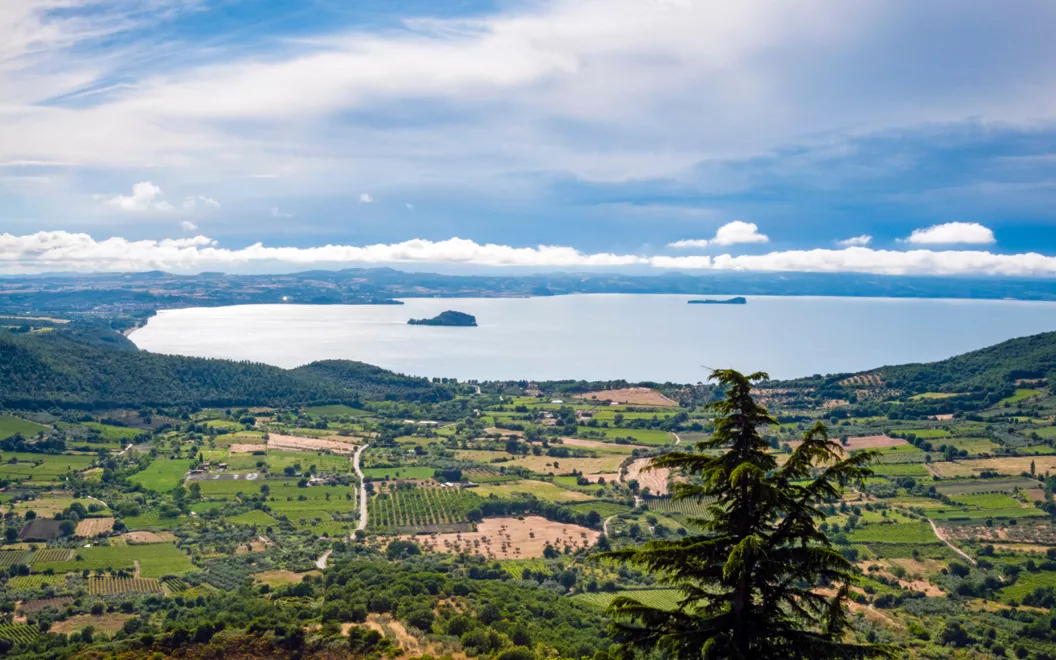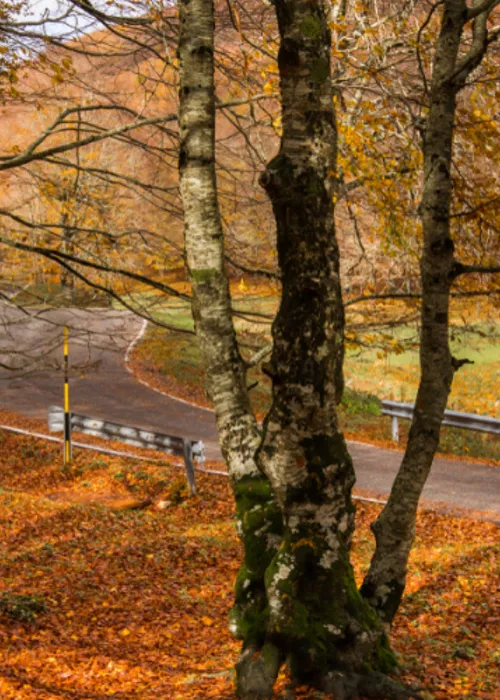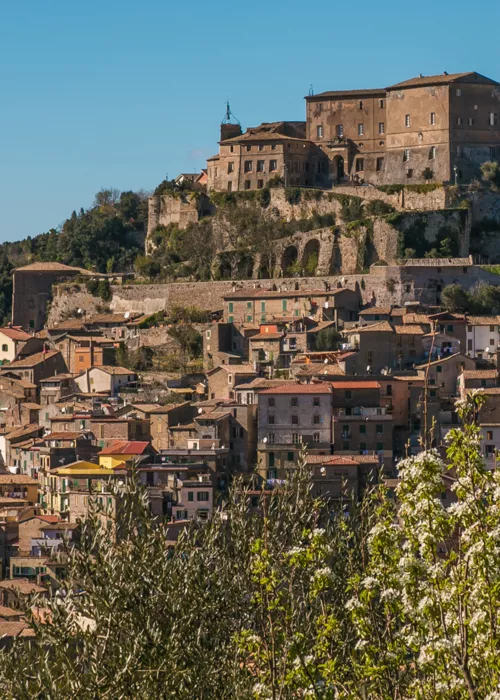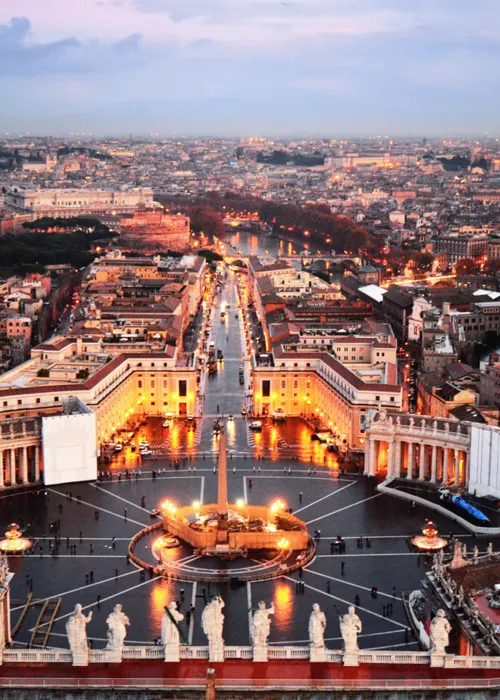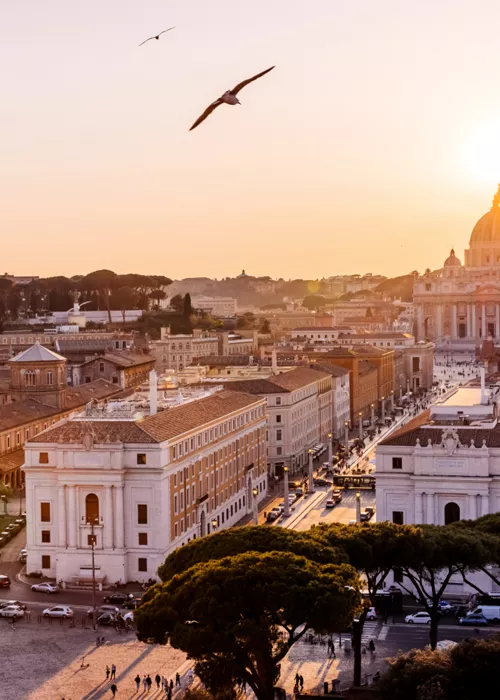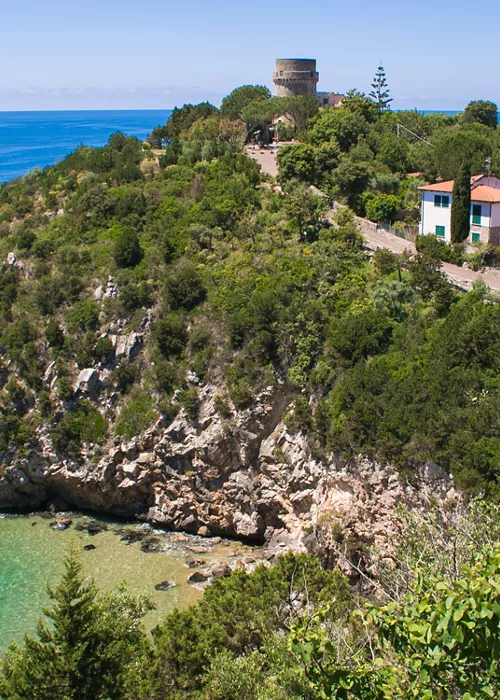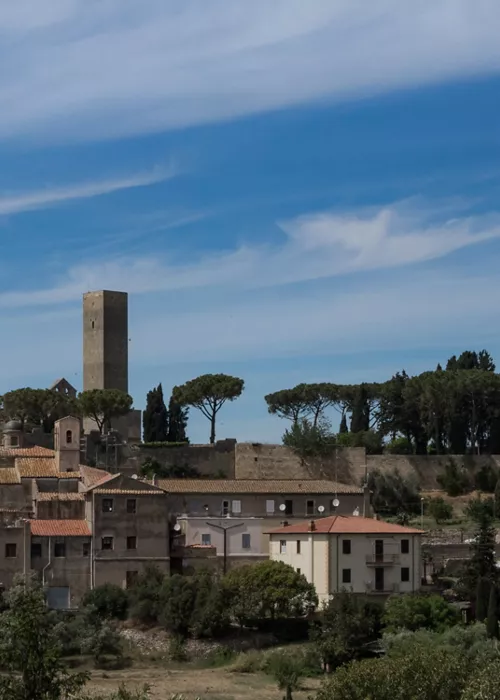Lake Bolsena

It's not exactly a sea, but almost. The vast Lake Bolsena, south of Orvieto, has an area of over 100 square kilometres and a perimeter of more than 40. All that's missing is the salt water - but in this lake you'll find sea bass, mullet, eels, whitefish, carp and tench. In some places, the water is 150 metres deep, and there are three or four lakeside beaches where you can swim.
This is the only one of Lazio's great lakes to have two islands, probably the remains of secondary volcanic craters. Their vegetation is made up of Mediterranean scrub, holm oaks and olive trees, growing opposite the oak and chestnut forests that cover the lake basin. In summer, you can see the islands up close and even visit one of them, thanks to boat trips from the little marina at Capodimonte or another harbour a short distance away, in Bolsena itself.
In Bolsena, an Italian Touring Club Orange Flag resort the church of greatest historical and artistic interest is dedicated to St Christina, in memory of the two miracles for which the town is famous. The saint, who lived in the third century AD, was thrown into the lake with a stone around her neck, but the stone rose to the surface and brought her back to the shore, unharmed. More famous is the second miracle: in 1263, a drop of blood dripped from a consecrated communion wafer, convincing a doubtful priest that it really was the body of Christ.
Your tour of Lazio's great volcanic lakes continues southwards. Taking the Via Cassia Nord, you can reach the two villages on the opposite shore from Bolsena, Capodimonte and Marta, before passing through Montefiascone.
Lake Vico

Here the environment is geologically similar but touristically very different from that of the Lake Bolsena. It is about 50 kilometres further south and still in a belt of ancient extinct volcanoes, but what is attractive is a nature reserve which can be explored by following marked trails. The challenges are varied: short walks along the banks, paths in the coastal marshes, or hikes higher up around the dormant crater.
If you opt for the more complete and more scenic route, you should be aware that this one does not have any major difference in altitude: it is a ring of about 20 kilometres for about six hours of walking. Once you reach the car park, at Canale, take the unpaved roads on the right: this is the 100M path of the Italian Alpine Club, which follows the old route of Via Cassia. At the first fork, continue straight on through the woodland and then take the Strada di Mezzo, trail 103, which offers views of the lake. At the third fork, descend to the left, trail 128A, to the tarmac along the perimeter; keeping to the right of the Riacci fountain, continue along a dirt track through the pastures. Once you reach the Cerreto birdwatchingobservatory, briefly follow the tarmac in a northerly direction, leaving it at the Nocicchiola fountain to take a path on the slopes of Monte Venere. Finally, you return to the Canale car park through a dense beech forest.
Information and cartography are available at the Visitor Centre of the reserve in the nearby Caprarola, a location that is also very interesting due to the Farnese legacies.
Bracciano Lake

Coming from Lake Vico, along the Via Cassia, the view of the Lazio basins of volcanic origin takes on large dimensions with Lake Bracciano. Its scale of almost 60 square kilometres with a perimeter of about 35 kilometres, stuns visitors with the quietness of the panoramas, the surrounding vegetation, the beaches and the bathing establishments, such as the beloved ones at Vigna di Valle on the west coast, which are very close to the Historical Museum of the Air Force. Three very interesting towns are also lined up on its shores. The closest to the Via Cassia is Trevignano Romano, an orange flag village of the Italian Touring Club: with its small museum of Etruscan finds and the hill dominated by the remains of a Orsini fortress that is particularly splendid at sunset, it is a place to see.
However, in Bracciano itself there is not only the lake with its attractions. There is the Orsini-Odescalchi Castle, which is very well adapted as a museum, with frescoed rooms, 16th-century paintings, collections of ceramics, a collection of Etruscan finds, an important armory, and a beautiful courtyard with a porch and a loggia. Finally, it is imperative to take the external staircase so as not to miss the splendid view of the lake from the walkway.
On its cliff, which protrudes into the waters of the southern coast, is Anguillara Sabazia, with its 16th-century Porta Maggiore, the eighteenth-century collegiate church of Santa Maria Assunta, noted for its cuisine based on fish from the lake and broccoli, as well as its fireworks at local festivals and fairs.
All this is part of the Bracciano-Martignano Regional Natural Park, a landscape of hills covered with woods, oak, chestnut and beech forests that extends over a wide area that involves both Viterbo and the territory of Rome. The other name in the park's title emphasises the presence of the small and silent lake of Martignano, which is located next to it in a green basin amidst common moorhens, coots, herons, wild ducks and little grebes. Trails and beaches lead you to discover the quality of the smaller mirror, with waters that are, if possible, even purer than those of its big brother.
Lake Albano

It is said that all roads lead to Rome. Our itinerary, which touches on the great Lazio lakes of volcanic origin, draws to a close, however, by avoiding the capital, or rather suggesting that we go around it to arrive directly in the area of the Castelli Romani area and come across Lake Albano without too much diversion. For many centuries, a wonderful expanse of water has opened up in place of two secondary craters at the bottom of a wooded basin of oak and chestnut trees. It was perhaps for this very reason that Emperor Septimius Severus had chosen to station his legionaries here, in what would later become Albano Laziale, laying the foundation of a real city on the Via Appia, the Queen of all streets.
Albano has the scent of antiquity. This is evidenced by the three museums that enrich the city along with churches such as St. Peter's and the Rotunda, all built on pre-existing Roman buildings. The Amphitheatre, the Porta Pretoria, the gigantic Cisternoni that served as water reservoirs for Albano, the Baths of Caracalla, the Imperial Villa, the Orazi and Curiazi tombs and the catacombs of St. Senator with their mural paintings are all stops on a unique archaeological tour.
In any case, don't forget that near Lake Albano, there is also Castel Gandolfo with the Pontifical Villas.
Lake Nemi

The younger brother of Lazio's five great volcanic lakes is objectively a jewel. From the village of the same name, you walk down a fairly long and steep but not too difficult pathway, until you see the lake surface up close and completely surrounded by woods. Peace reigns.
Although Castel Gandolfo is only a dozen kilometres away, there are no memories of the Vatican here. There are, however, those of the ancient Romans, especially due to the fame surrounding the tragic story of the Ships of Nemi. It seems that the emperor Caligula established the lake's fame as an ideal holiday resort by having two huge, splendidly decorated flat-keel boats built for himself in the 1st century AD: more than real ships, they had to be island palaces. It would also seem that Caligula was not much loved by the Roman Senate of the time, as the pair of boats were sunk after his death. The so-called "damnatio memoriæ", i.e., the cancellation of the memory of rival figures after their death, was not uncommon at the time of the Roman Empire. The fact is that rumours of the Nemi Ships persisted, but not much was known about them until they were recovered in the 1920s. The "damnatio" was twofold, however, because during World War II, the two recently rediscovered ships were destroyed by fire. Now only models and remnants of them can be seen in a museum.
It is not so important to mention, let alone be aware of it, but the altitude of Lake Nemi is over twenty metres higher than that of nearby Lake Albano. Therefore, even volcanoes have their own personalities.


